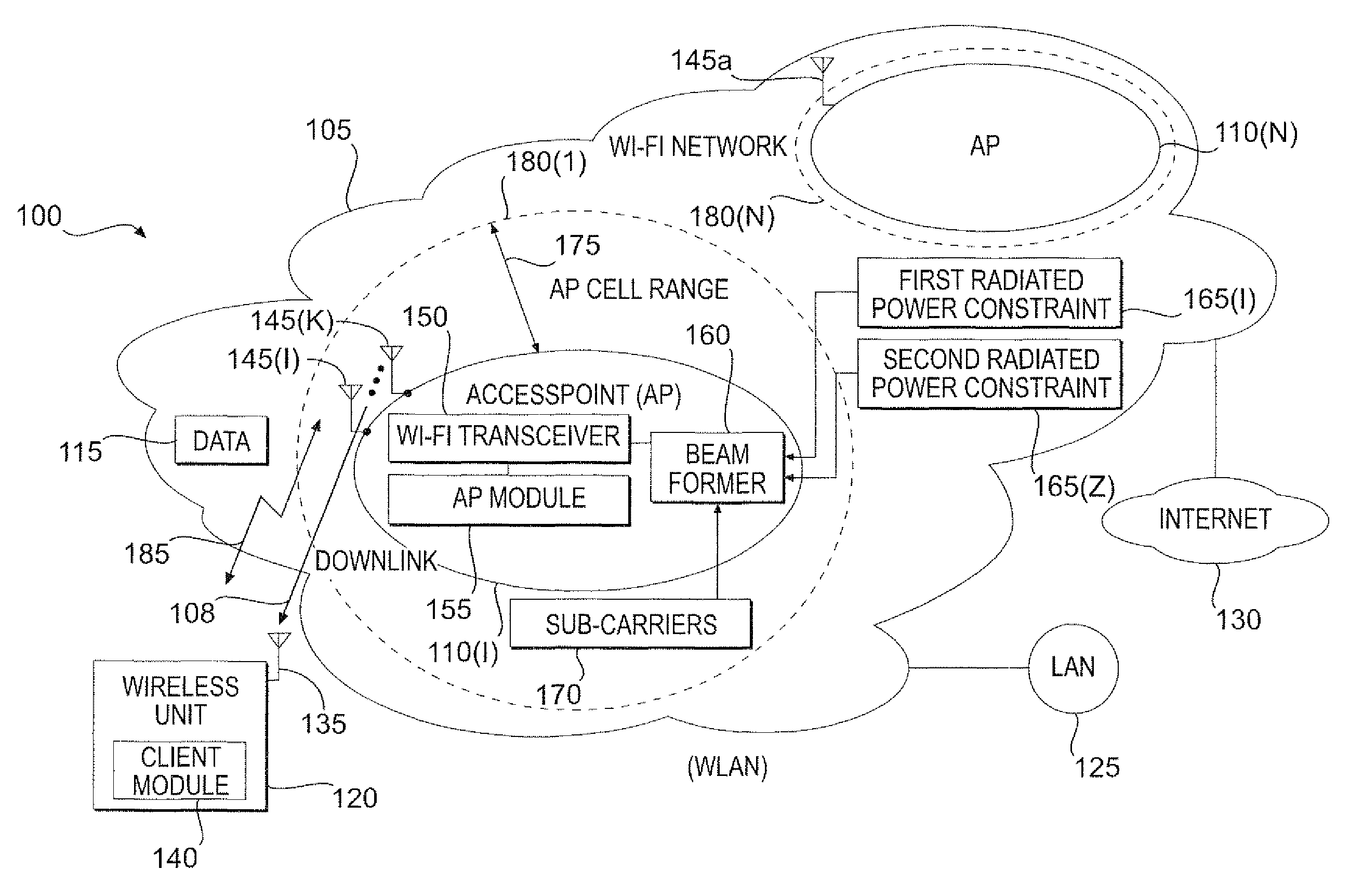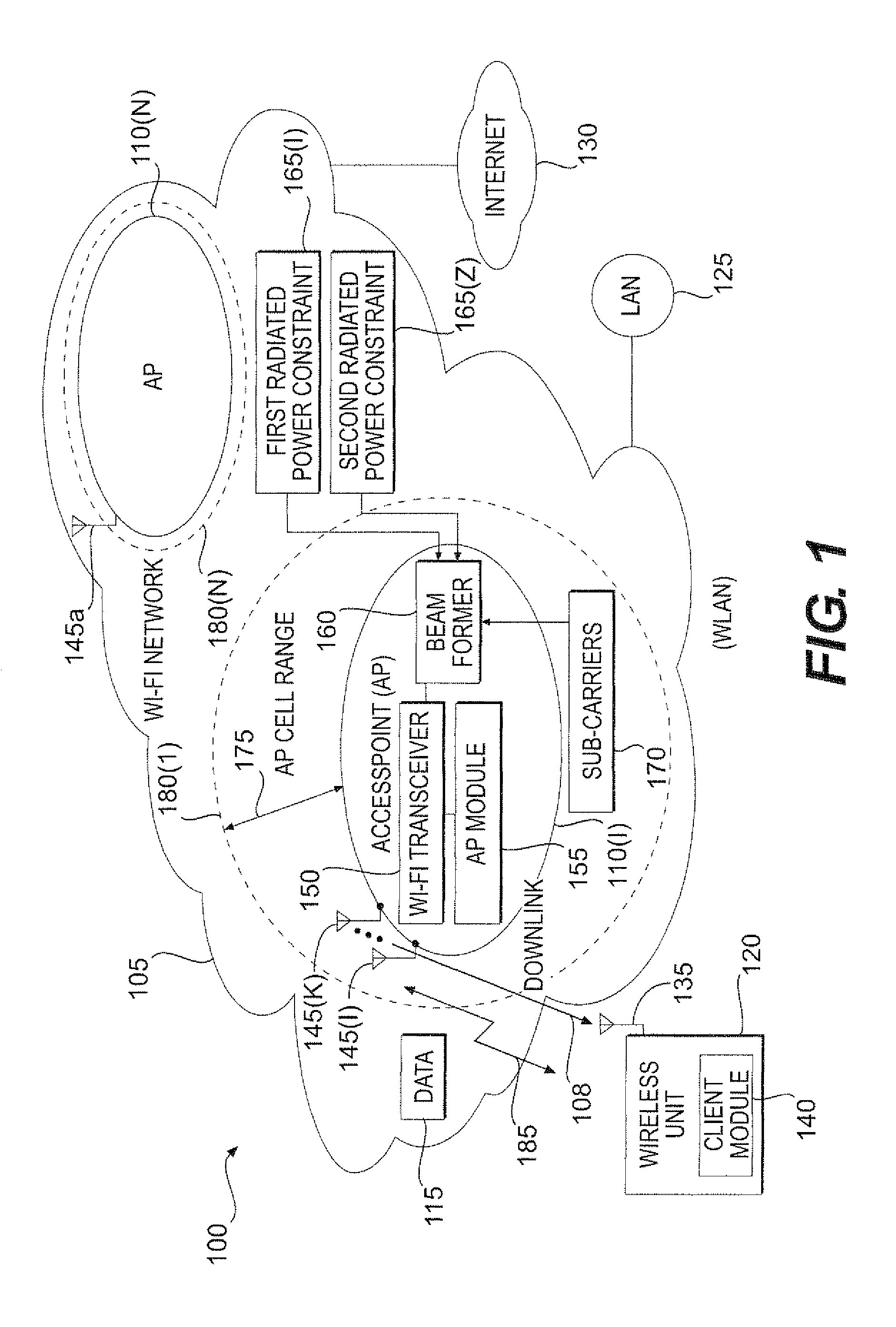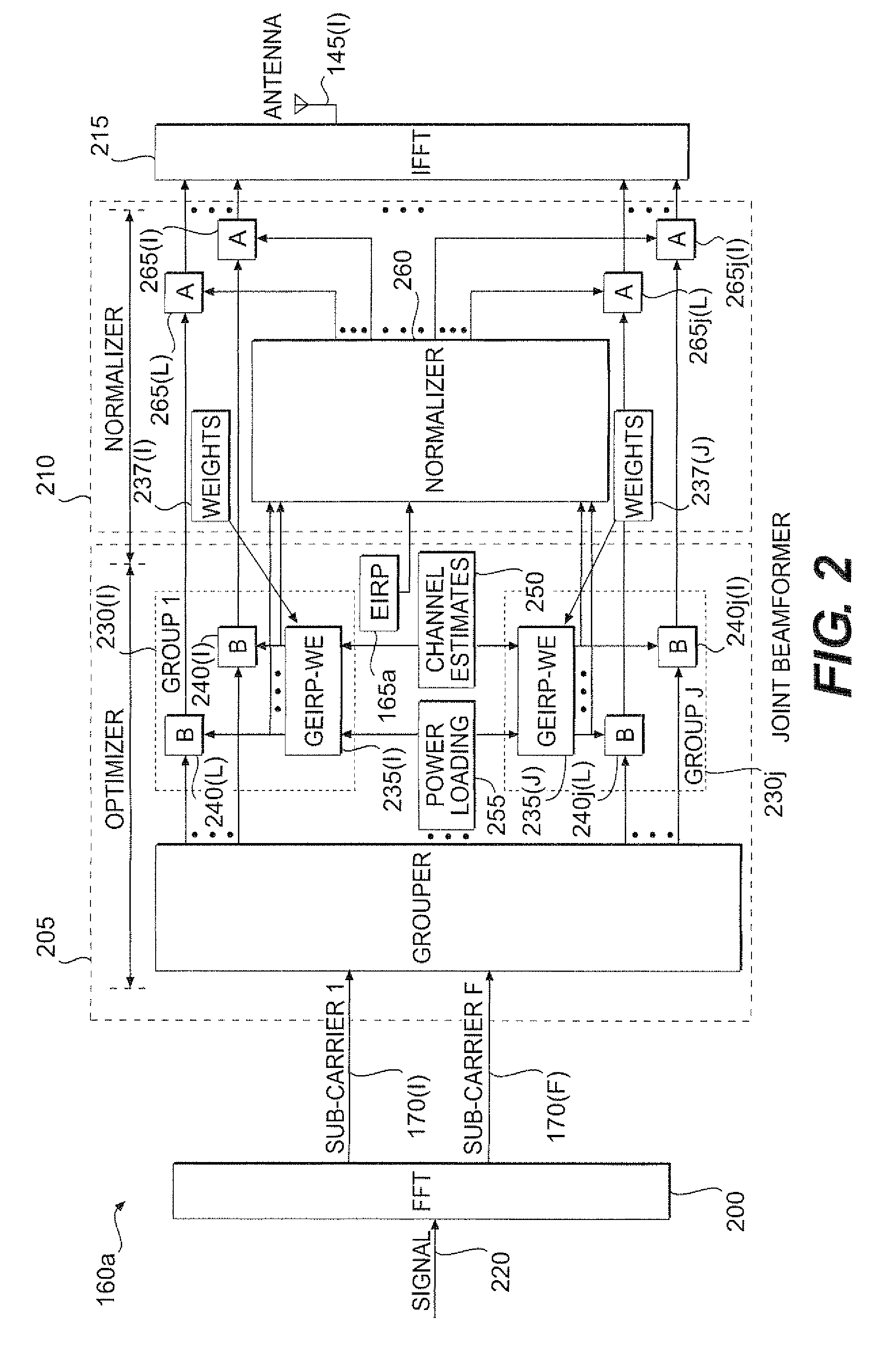Increasing the range of access point cells for a given throughput in a downlink of a wireless local area network
a wireless local area network and access point technology, applied in the field of wireless communication, can solve the problems that the beamforming design under the conventional tp constraint may not be directly applicable, and achieve the reduction of the total power and significant performance degradation, significant performance degradation, and the effect of reducing the total power
- Summary
- Abstract
- Description
- Claims
- Application Information
AI Technical Summary
Benefits of technology
Problems solved by technology
Method used
Image
Examples
Embodiment Construction
[0031]Illustrative embodiments of the invention are described below. In the interest of clarity, not all features of an actual implementation are described in this specification. It will of course be appreciated that in the development of any such actual embodiment, numerous implementation-specific decisions may be made to achieve the developers' specific goals, such as compliance with system-related and business-related constraints, which will vary from one implementation to another. Moreover, it should be appreciated that such a development effort might be complex and time consuming, but may nevertheless be a routine undertaking for those of ordinary skill in the art having the benefit of this disclosure.
[0032]Generally, a method and an apparatus are provided for transmitting data in a downlink of a plurality of access point cells in a wireless local area network (WLAN) to increase the range of the downlink for a given throughput under one or more radiated power constraints. A plu...
PUM
 Login to View More
Login to View More Abstract
Description
Claims
Application Information
 Login to View More
Login to View More - R&D
- Intellectual Property
- Life Sciences
- Materials
- Tech Scout
- Unparalleled Data Quality
- Higher Quality Content
- 60% Fewer Hallucinations
Browse by: Latest US Patents, China's latest patents, Technical Efficacy Thesaurus, Application Domain, Technology Topic, Popular Technical Reports.
© 2025 PatSnap. All rights reserved.Legal|Privacy policy|Modern Slavery Act Transparency Statement|Sitemap|About US| Contact US: help@patsnap.com



